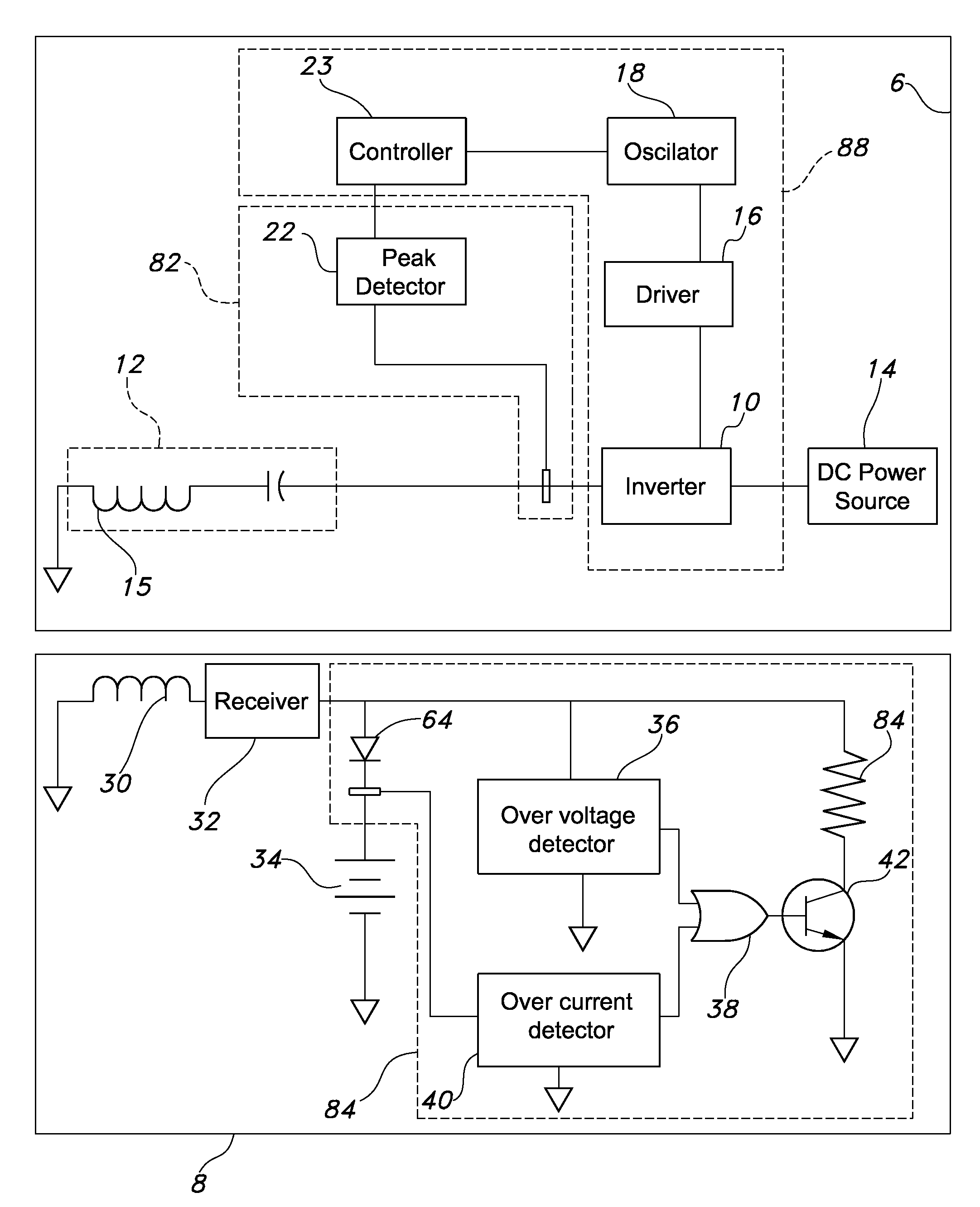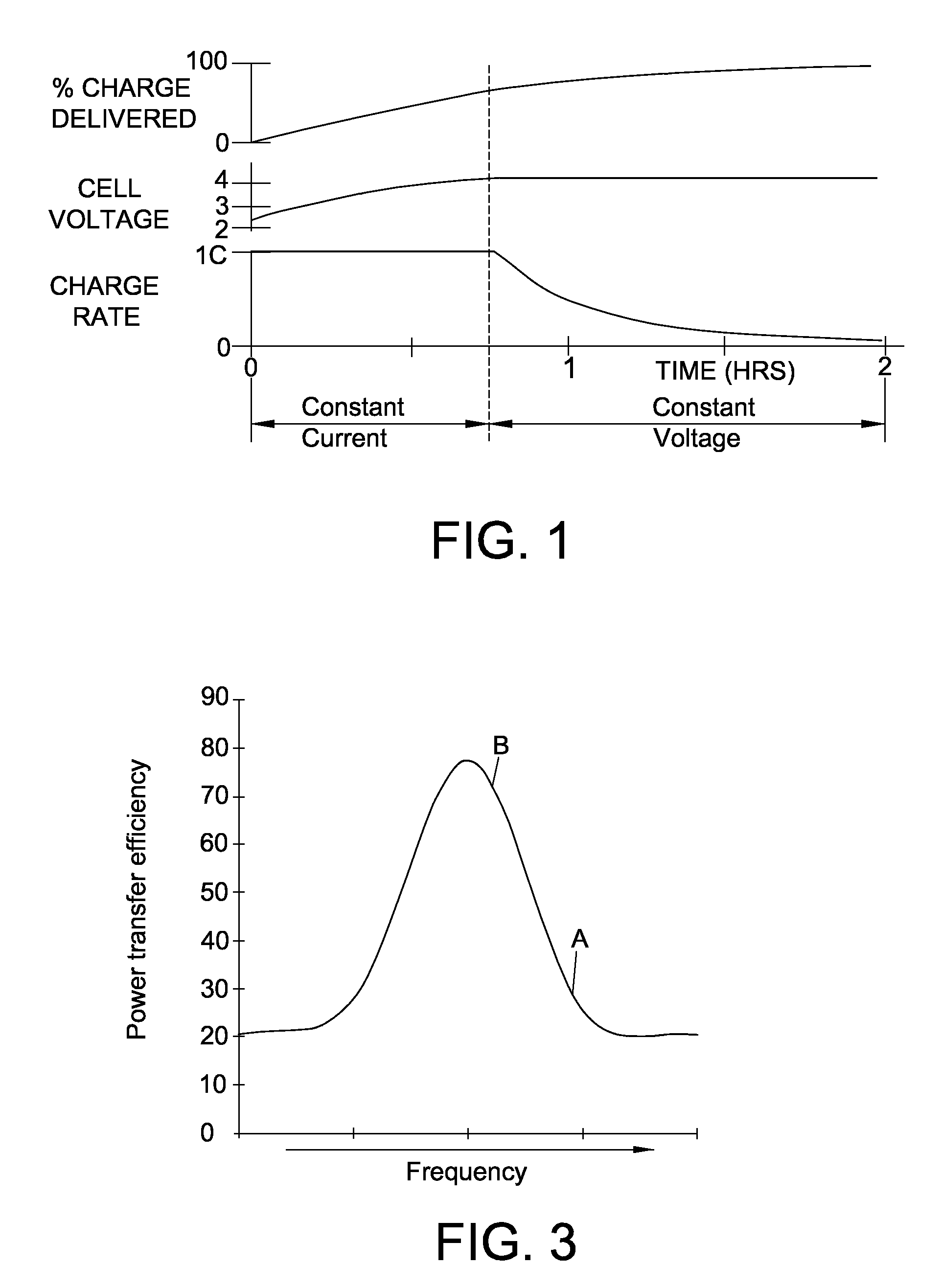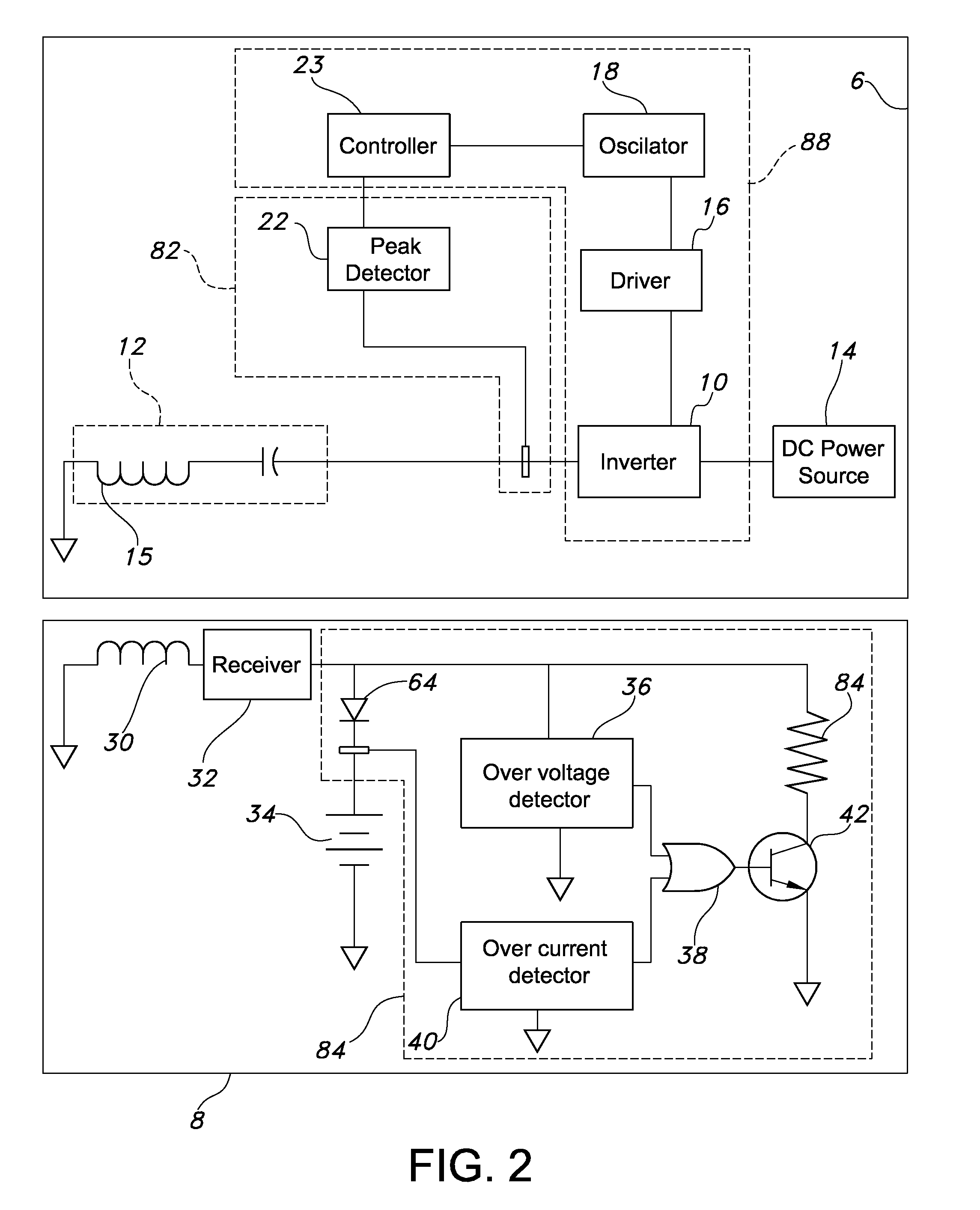System and method for inductively charging a battery
a battery and inductive charging technology, applied in secondary cell servicing/maintenance, safety/protection circuit, transportation and packaging, etc., can solve the problems of not all batteries are easily charged inductively, li-ion batteries are unable to absorb an overcharge, and li-ion batteries are not as straightforward as other batteries, so as to achieve the effect of increasing current through the primary coil
- Summary
- Abstract
- Description
- Claims
- Application Information
AI Technical Summary
Benefits of technology
Problems solved by technology
Method used
Image
Examples
Embodiment Construction
[0032]An inductive charging system in accordance with an embodiment of the present invention in shown in FIG. 2. The inductive charging system 4 is configured to inductively charge a battery having a nonlinear charging profile, such as a Li-Ion battery. The system 4 generally includes a charger circuit 6 and secondary circuit 8. The charger circuit 6 generally includes a primary coil 15, a frequency controller 80 for applying power to the primary coil at a desired frequency and a feedback detector 82 for receiving feedback from the secondary circuit 8. The secondary circuit 8 generally includes a secondary coil 30 for receiving inductive power from the charger circuit 6 and a feedback mechanism 84 for providing feedback to the charger circuit 6 indicative of the voltage or current in the secondary circuit 8. The frequency controller 80 varies the frequency of the power applied to the primary coil 15 as a function of the feedback from the secondary circuit 8. Although described in co...
PUM
| Property | Measurement | Unit |
|---|---|---|
| voltage | aaaaa | aaaaa |
| current | aaaaa | aaaaa |
| operating frequency | aaaaa | aaaaa |
Abstract
Description
Claims
Application Information
 Login to View More
Login to View More - R&D
- Intellectual Property
- Life Sciences
- Materials
- Tech Scout
- Unparalleled Data Quality
- Higher Quality Content
- 60% Fewer Hallucinations
Browse by: Latest US Patents, China's latest patents, Technical Efficacy Thesaurus, Application Domain, Technology Topic, Popular Technical Reports.
© 2025 PatSnap. All rights reserved.Legal|Privacy policy|Modern Slavery Act Transparency Statement|Sitemap|About US| Contact US: help@patsnap.com



